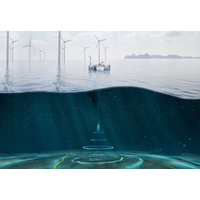
Robosys Automation Aims to Streamline Offshore Wind Environmental Data Collection
various aspects such as bird monitoring and sea conditions. Data is collected manually and analyzed after it reaches shore, significantly slowing down the decision-making process.Project ORACLES will address this by leveraging advanced marine robotics, advanced autonomous systems, and other digital ocean technologies, a move expected to help the industry meet the UK’s target of 60GW of offshore wind capacity by 2030.The project consortium includes ACUAOcean, MSEIS, Plymouth Marine Laboratories, and the Offshore Renewable Energy Catapult.Funding for Project ORACLES was secured through the UK Research

Lander Lab: Chilean Ocean Lander Data Acquisition and Control System
IntroductionThere are enormous technological challenges in accessing and sampling hadal depths, but the recent surge in the development of deep-ocean technologies ranging from ocean landers, remotely operated vehicles (ROVs), and human-occupied vehicles (HOVs) has allowed the oceanography of trenches to be addressed.Ocean landers are a cost-effective class of autonomous unmanned underwater vehicle that possess a unique capacity for exceptionally quiet, extended stays on the seafloor, studying benthic communities and environments by in-situ sensing and sampling. Multiple landers can be used to survey
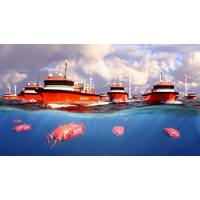
Nauticus Robotics, AOS Join Forces for Offshore Robotics
new alliance and look forward to working with AOS and its affiliates to advance the ongoing trial, adoption, and integration of scalable autonomous and remote solutions into new and improved ways of working in offshore waters.“Our missions are perfectly aligned and seek to leverage the latest ocean technologies to challenge industry convention and bring about meaningful change to subsea asset management practices, from surface to seabed,” said John Gibson, President and CEO of Nauticus Robotics."We are delighted to team up with Nauticus Robotics to bring new ideas and opportunities to market
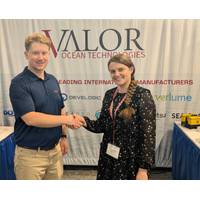
Verlume Appoints Valor Ocean Technology As First Canadian Business Development Agent
Verlume, a leader in subsea batteries and power management systems, has appointed Valor Ocean Technologies as its first business development agent in Canada. The partnership follows the successful offshore deployment of three Verlume Charge systems in Canadian waters and signals a strategic expansion to meet growing market demand.Based in Halifax, Nova Scotia, Valor Ocean Technologies (formally known as ValorBPS) is a provider of advanced ocean technology systems, serving energy, defense, and scientific customers across North America. Headquartered in Halifax, Nova Scotia, with an additional office in
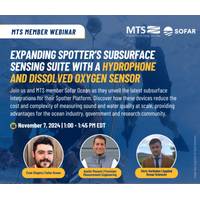
MTS Member Webinar: Expanding Spotter’s Subsurface Sensing Suite with a Hydrophone and Dissolved Oxygen Sensor
measuring sound and water quality at scale, benefitting the ocean industry, government and research community. A Q&A will follow the presentation. Click here to register.Date and Time:Thursday, November 7, 2024 | 1:00 – 1:45 PM ESTPresenters:Evan Shapiro - Sofar Ocean, CTOAs CTO of Sofar Ocean Technologies, Inc., Evan’s research and development efforts are focused on strengthening the connection between the world’s oceans and the humans who depend on them (all of us). This is achieved by driving unprecedented scalability in distributed ocean sensing systems, and unprecedented accessibility

OPT Teams Up with Brazilin Institute for Autonomous Ocean Developments
and unmanned surface vehicles and Next Generation PowerBuoys equipped with AI capable Merrows.The agreement follows recent discussions between SENAI and OPT in Brazil."As we continue our growth, we are excited to partner with SENAI to explore supporting the development and deployment of ocean technologies into Brazil.“The offshore energy market in Brazil continues to grow and we believe our PowerBuoys and WAM-V unmanned surface vehicles provide the next generation of operators the solutions to generate offshore energy more effectively and efficiently,” said Philipp Stratmann, CEO
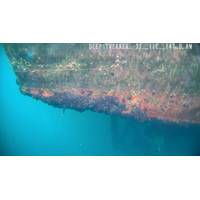
Deep Trekker Leads $8M AI ROV Ship Modeling and Detection Project
escalate.Beyond technological advancements, the project is expected to improve safety standards, support and promote environmental responsibility, and enhance economic outcomes in Canada's maritime industry by driving job creation and reinforcing Canada’s status as a leader in AI-driven ocean technologies.

Apply Now for the Fourth Ocean Startup Challenge
innovation and growth within Canada’s ocean economy, propelling the nation to the forefront of the global blue economy."The Ocean Startup Challenge is more than a competition; it's a catalyst for innovation and economic growth. By empowering entrepreneurs to develop groundbreaking ocean technologies, we are not only addressing critical challenges but also strengthening our position as a global leader in this crucial sector,” said Paula Mendonça, Executive Director of the Ocean Startup Project.“Participating in this challenge unlocks various growth opportunities in a
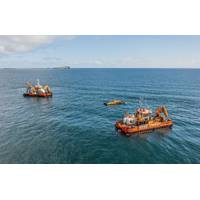
Mocean Energy’s Blue X Wave Device and Verlume’s Halo Battery Come Ashore
data and growing confidence in the system's ability to deliver reliable low carbon power and communications to subsea assets and long-term underwater vehicle residency.“We are exploring the next steps both here in the UK and overseas to further demonstrate how this combination of ocean technologies can enable reliable low carbon power and communications to subsea architecture in a live environment,” Mocean Energy said on social media.Wave-Powered Subsea Project Completes 12-Month Offshore Test CampaignThe $2.5 million (£2 million) RSP project connected the Blue X wave energy
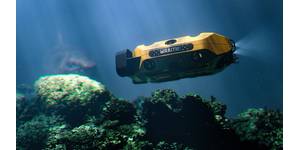
 August 2025
August 2025





